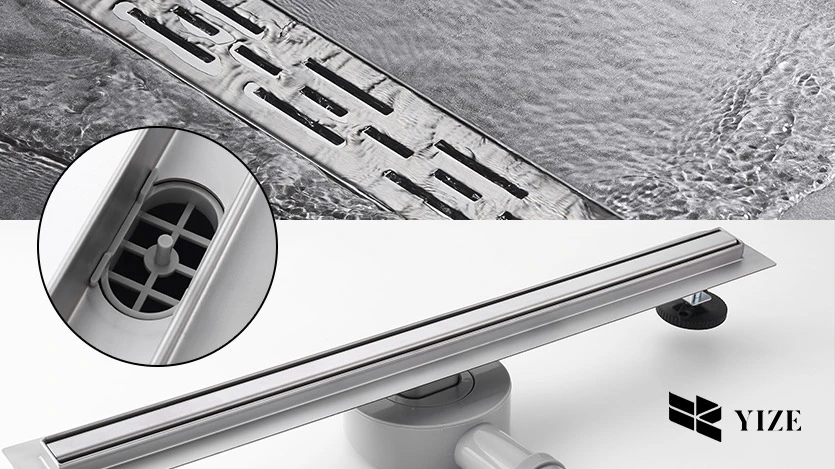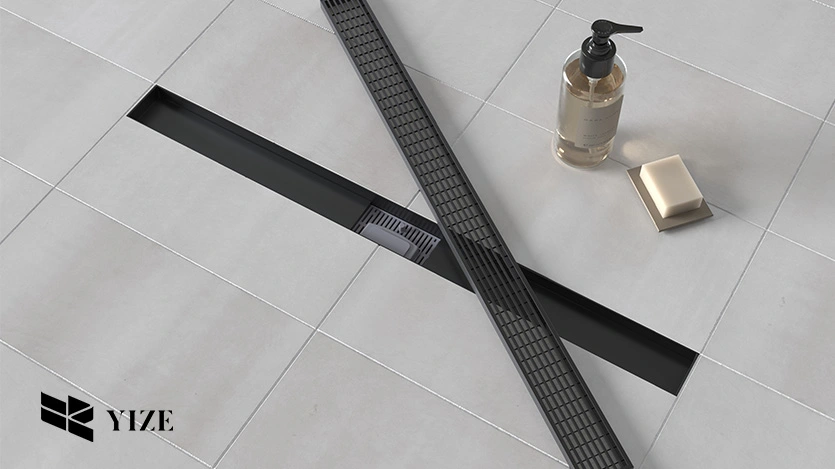
I. Introduction
Shower drainage systems play an important role in almost every structure ranging from private residences to commercial buildings. Wholesale drainage as a component of construction and landscaping entails the buying of drainage products in large quantities. This method can help reduce expenses and keep items on hand when they are most required. Information on this guide is quite extensive on all aspects of wholesale drainage supplies and systems to enable you make right decisions for your projects.
II. Section 1: Understanding Wholesale Drainage
Shower wholesale drainage means the act of purchasing drainage equipment and supplies in large quantities. It can also encompass pipes, pipe fittings, grates, and catch basins. The primary benefit of buying products at wholesale is the possibility to save money. Purchasing in large quantities usually comes at a lesser overall cost than buying the same product in small portions time after time. Also, it means that when you are undertaking large scale project, you are likely to have all the raw material that you need to complete your project without a break due to lack of materials.
1. Types of Wholesale Drainage Supplies For the Shower
- Drain grates: They help prevent debris from clogging the drain and can be made of different metals or durable plastics.
- Shower drains: These come in various designs and materials such as stainless steel, plastic, or brass.
- Drain pipes: Usually made of PVC or other types of plumbing pipes to carry the water away.
- Drain covers: Provide additional protection and can have different patterns or finishes.
2. Key Considerations When Selecting Drainage Supplies
- Project Type: Select material depending on the type of project.
- Material Quality: Choose the right materials to reduce call for repairs and replacements.
- Cost: Focus on quality and cost; it was discovered that using higher quality materials could reduce cost in the long run.
- Supplier Reputation: Always buy from established dealers with quality branded items such as those from YZDRAIN for the best quality goods.
III. Section 2: How Do You Prepare a Drainage System For the Shower?

1. Initial Planning and Design
In any drainage project, much emphasis should be placed on planning and design before embarking on the actual project. The first step is, look at the location where the drainage system is going to be laid down. Find out areas with depressions where water is likely to collect and arrange for the path of the pipes so that the water drains easily. Sketch a detailed plan of where each pipe, fitting, grate, or catch basin will be located at or in the structure.
2. Materials and Tools Needed
- Materials: Pipe work, pipe fittings, manhole covers, gully graters, gully traps, stones, sand.
- Tools: Shovel, pipe cutter, level, measuring tape, trenching tool.
3. Installation Process
- Mark the Area: To illustrate, it is recommended to use spray paint or flags to indicate where the pipes or some other components will be connected.
- Dig Trenches: Excavate foundation trenches to the depth required by your layout plan and to facilitate the proper drainage of the shower drain to be installed.
- Install Pipes and Fittings: Place the pipes in the trenches as designed and join them using the correct joints. Make sure that the connections are tight enough to avoid any leaks.
- Add Grates and Catch Basins: Place grates and catch basins at these points to ensure proper drainages of water at the surface.
- Backfill and Compact: Fill up the trenches with gravel and sand, and then it is recommended that the soil be compacted in order to ensure that it holds well.
- Test the System: To test the functionality of the system, pour water through the system to see if there is any leakage, or if there are some areas of the system where there is poor drainage.
IV. Section 3: How Deep Should the Shower Drainage System Be?
The top of a shower drain should be at the same level or up to 2 millimeters (1/16 inch) lower than the finished floor. For compression-style shower drain fittings, the drainpipe should be about 3/4 to 1 inch below the lip of the shower drain.
General Guidelines
- Residential Areas: Conventional wisdom is that such drainage systems in residential areas should be at least 18-24 inches deep.
- Commercial Areas: Commercial areas require depths of 24-36 inches due to the likelihood of higher water accumulation.
- Landscape Areas: For landscaping projects, the suggested depth of fill could range from 12 to 18 inches.

V. Section 4: How Many Inches per Foot for Optimal Shower Drainage?
Slope refers to the angle of the slope that must be achieved in order to guarantee adequate drainage of water in the shower area. Failure to install a correct slope could lead to stagnant water in the shower area and cause slow drain or even development of molds. This is the correct slope that will help water to flow down the drain preventing the shower area to become slippery and dangerous to use.
Calculating the Optimal Slope
- General Rule: The standard recommended pitch for shower drain installation is 1/4 inch of drop for every foot of installation. This means for every inch of run, one quarter of an inch drop should be made towards the drain for the floor.
- Measure the Distance: Ensure you measure the length from the longest corner of the shower to where the drain is situated.
- Calculate the Slope: Divide the distance by 1/4 inch to find out how much incline is required in the end.
- Mark the Levels: Identify the minimum and maximum points of the slope on the shower floor.
- Install the Floor: Utilize some leveling tools in order to have the floor leveled in a correct manner from the marked points.
- Tools and Techniques: It is recommended to use a laser level or even a traditional level when assessing the slope while installing the shower floor. It is important to make the slope uniform so that water does not accumulate in certain areas.
VI. Section 5: Advantages of Wholesale Drainage Supply

- Cost Efficiency: Volume buying lowers costs in general, especially where there is a big undertaking that would require numerous purchases, and transportation costs.
- Availability and Convenience: A product with a broad catalogue available in stock eliminates instances where the procurement of specific materials can cause project hold up.
- Quality Assurance: That is why it is advisable to cooperate with accredited suppliers such as YZDRAIN and purchase high-quality and reliable materials.
In selecting a wholesaler, it is recommended that only companies with a good reputation for quality and product delivery should be chosen. Another important service offered by YZDRAIN is in regard to sourcing of quality drainage supplies to cater for several project requirements. Making sure you buy your materials from reliable suppliers will make your drains to work well and last long.
VII. Conclusion
Preparation and installation of shower drainage systems are essential to control the flow of water in different situations. This article shall help you make decisions on which wholesale drainage supplies to purchase and how a drainage system is prepared and installed. The advantages of wholesale drainage include cost efficiency, accessibility, and reliability. If you require excellent drainage material, you might want to consider sourcing them from trusted suppliers such as YZDRAIN.
Frequently Asked Questions (FAQs)
1. How can I find the most cost-effective wholesale shower drainage products?
When looking for cheap wholesale drainage solutions for your shower, it’s important to compare prices from multiple suppliers, negotiate bulk discounts, and consider purchasing in larger quantities. Additionally, look for sales, promotions, or clearance items that can further reduce the overall costs. YZDRAIN provides quality drainage supplies to cater to several project requirements.
2. What are the most common types of shower drains available through wholesale channels?
e most common types of shower drains available through wholesale channels include linear drains, square drains, round drains, and tile-in drains. These come in a variety of materials, such as stainless steel, brass, and PVC, to suit different design preferences and budget requirements.
3. How do I determine the right shower drain size for my project?
When selecting a shower drain size through wholesale channels, consider the dimensions of your shower area, the expected water flow, and any local building codes or regulations. Consult with a professional or refer to industry guidelines to ensure you choose the appropriate drain size for your specific shower setup.
4. Are there any special considerations I should keep in mind when installing wholesale shower drains?
When installing wholesale shower drains, be mindful of proper waterproofing, slope requirements, and any necessary adaptors or accessories. It’s recommended to consult with a professional plumber or follow manufacturer instructions closely to ensure a successful and code-compliant installation.

